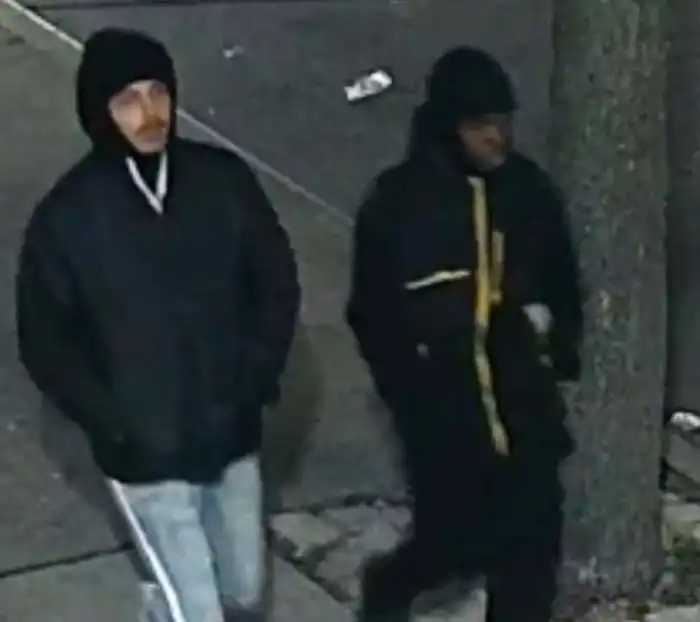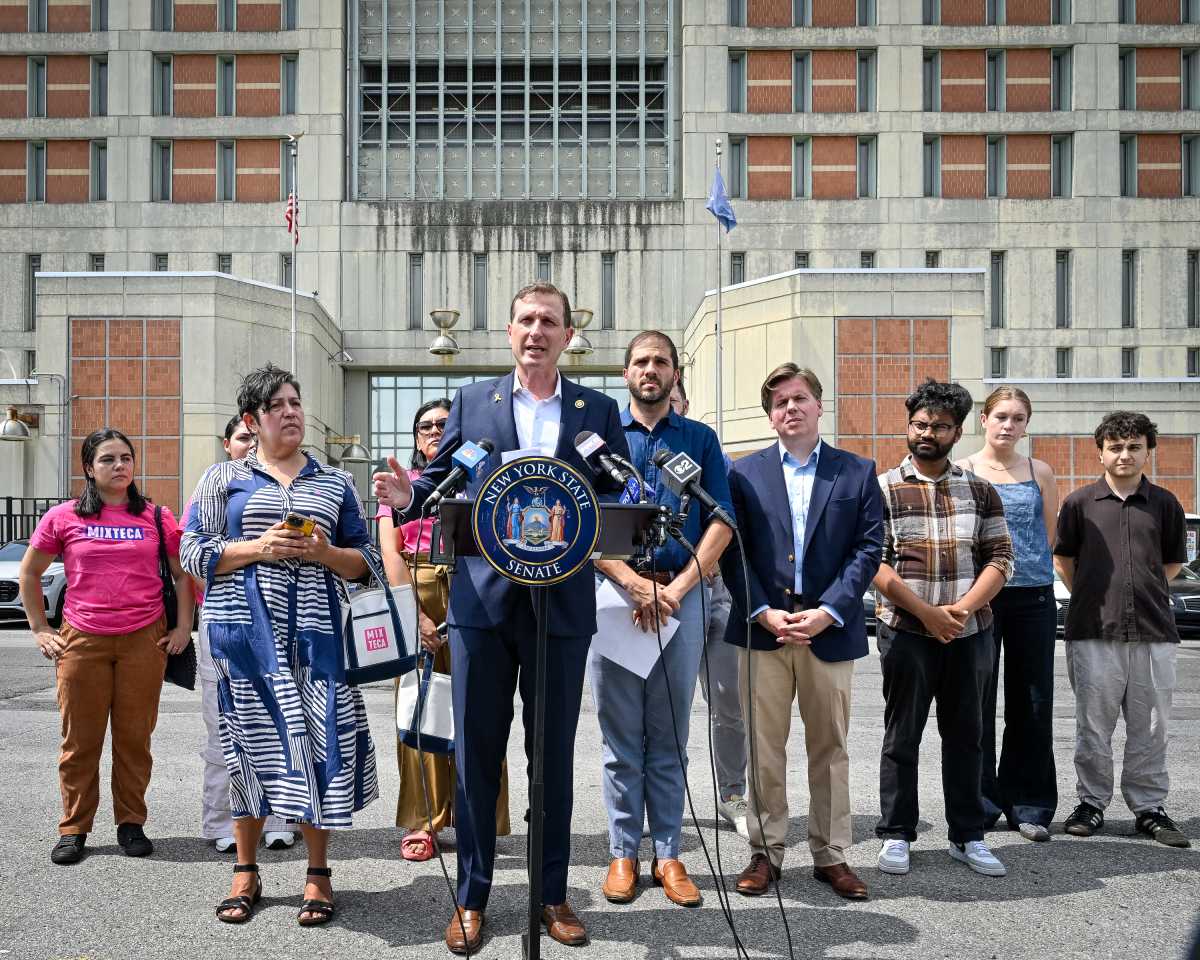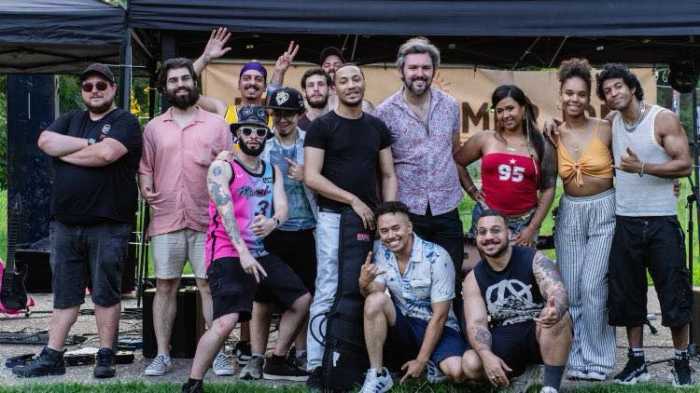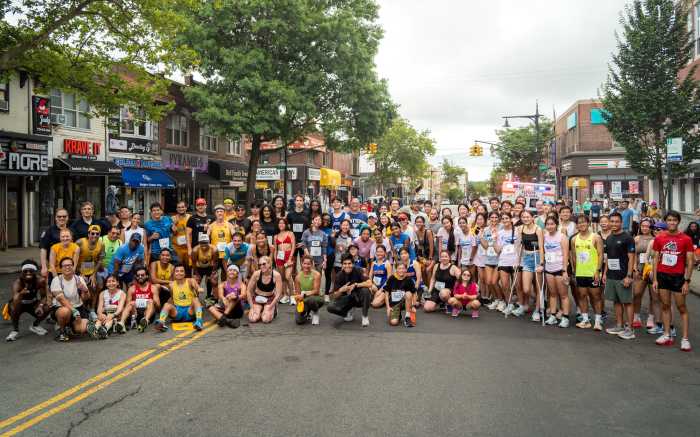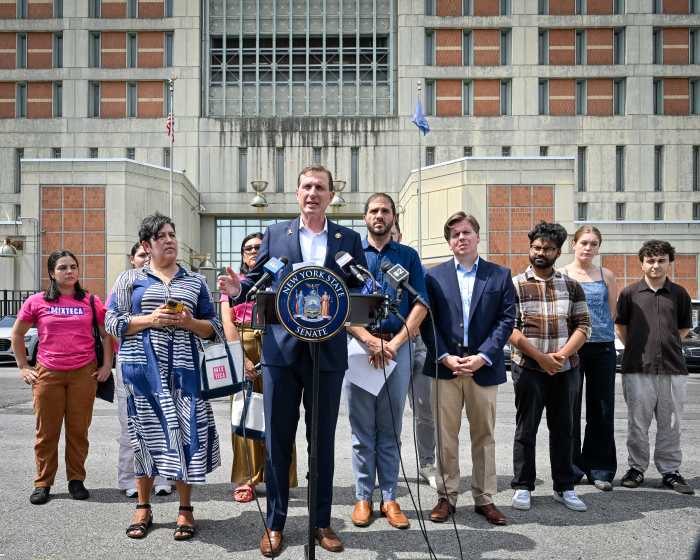The Brooklyn Bridge is getting a $300 million facelift.
The 1883 landmarked suspension bridge needs a variety of cosmetic and safety fixes. The city Department of Transportation will do the work on nights and some weekends between 2009 and 2014, representatives told the Community Board 1 Landmarks Committee last month.
“We want to build the structure and not come back again,” said Walter Kulczycki, the project engineer. “We’ll do it one time and do it right.”
The pavement on the bridge’s ramps is old and cracked, with potholes, Kulzcycki said. Salt and rain have deteriorated the arches.
The D.O.T. will reconstruct the pavement on the ramps leading to the bridge and rehabilitate the bridge’s supports to strengthen them. The arch blocks need to be reinforced so they are earthquake resistant.
The D.O.T. will widen the ramp that leads from the southbound FDR Dr. onto the Brooklyn Bridge. The ramp is currently one lane, but there is enough room to create two lanes, which will ease the traffic flow, Kulczycki said.
On the Brooklyn side, the D.O.T. will also widen the ramp leading off the bridge onto Cadman Plaza West and Old Fulton St.
The D.O.T. plans to paint the entire bridge, restoring its original light coffee beige color. The painting will be done from two barges starting from the middle of the East River and moving toward opposite shores. The entire process will take two years.
Along the bridge’s roadway, the D.O.T. will add steel safety barriers to prevent cars from crashing through the bridge’s granite balustrades and landing in the East River. The steel tubes, which are only visible to people crossing the bridge, were the most controversial feature of the project at the C.B. 1 meeting.
“They’re ugly,” said Bruce Ehrmann, co-chairperson of the Landmarks Committee. “Part of the reason to keep landmarks is to enjoy them. There’s no reason to preserve it if you can’t enjoy it.”
Project architect Jaime Vasquez agreed that the barriers are not attractive, but said they were necessary.
Kulczycki added that the D.O.T.’s hands are tied — since the project receives federal funding, the D.O.T. is required to install the barriers.
The D.O.T. will return to C.B. 1 later this year to explain the construction project in more detail.
–Julie Shapiro





